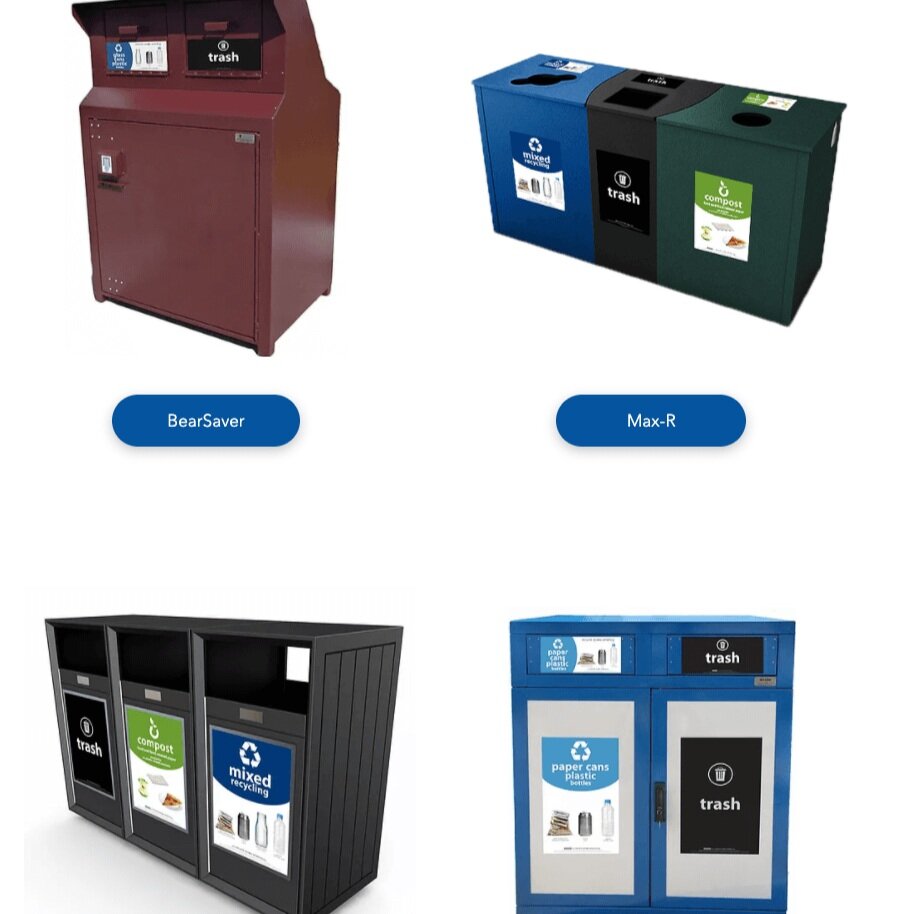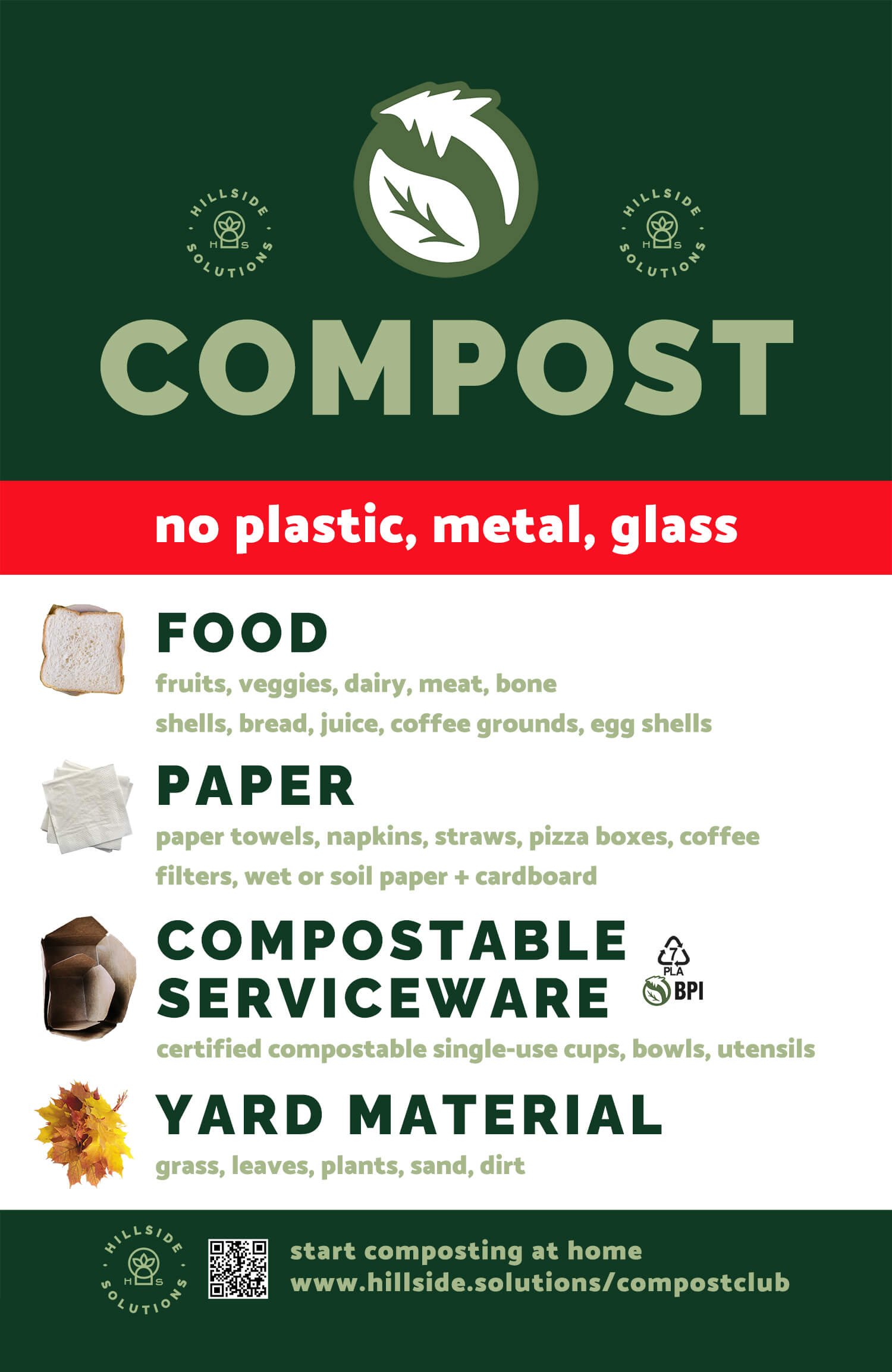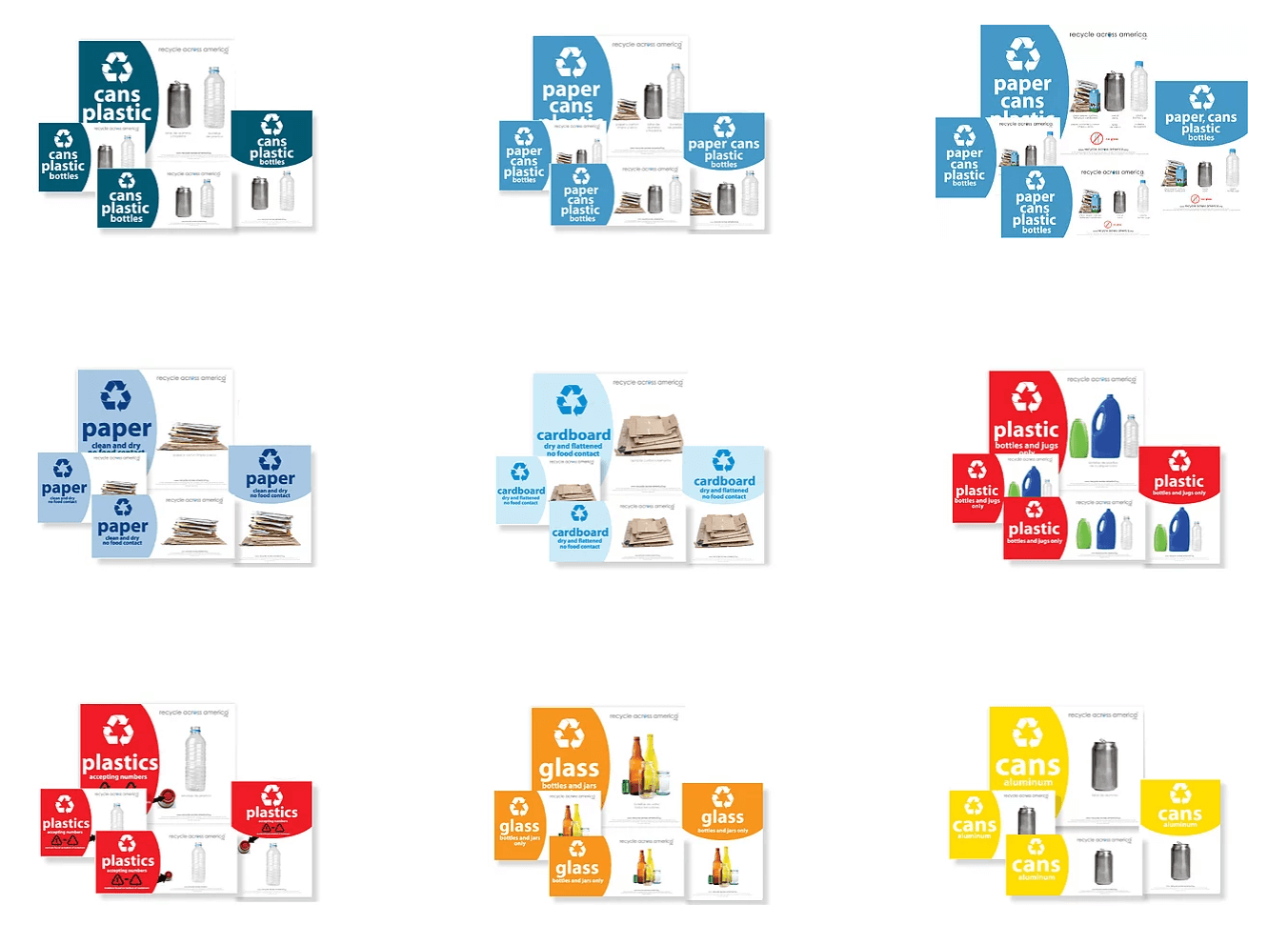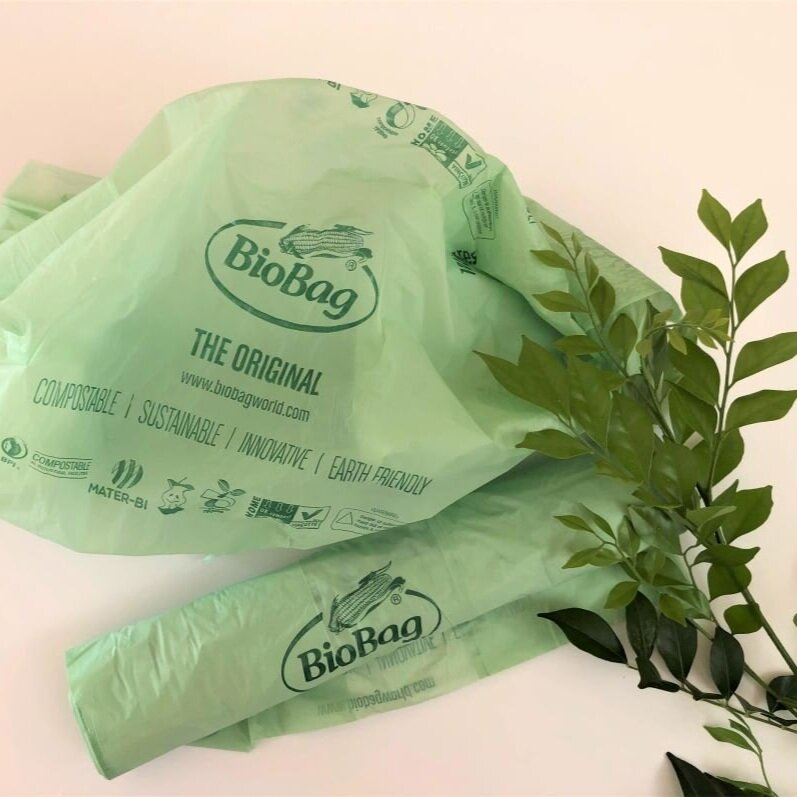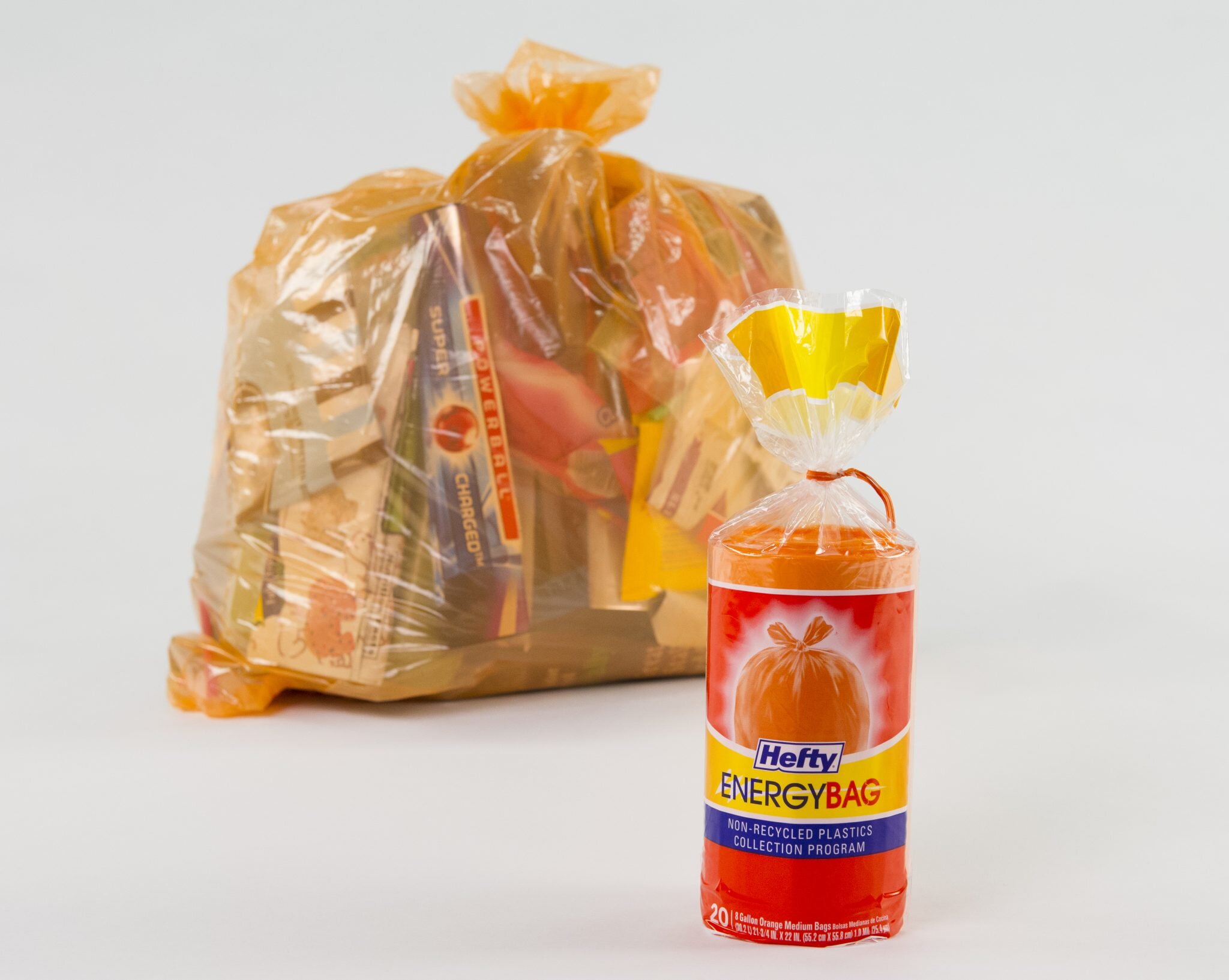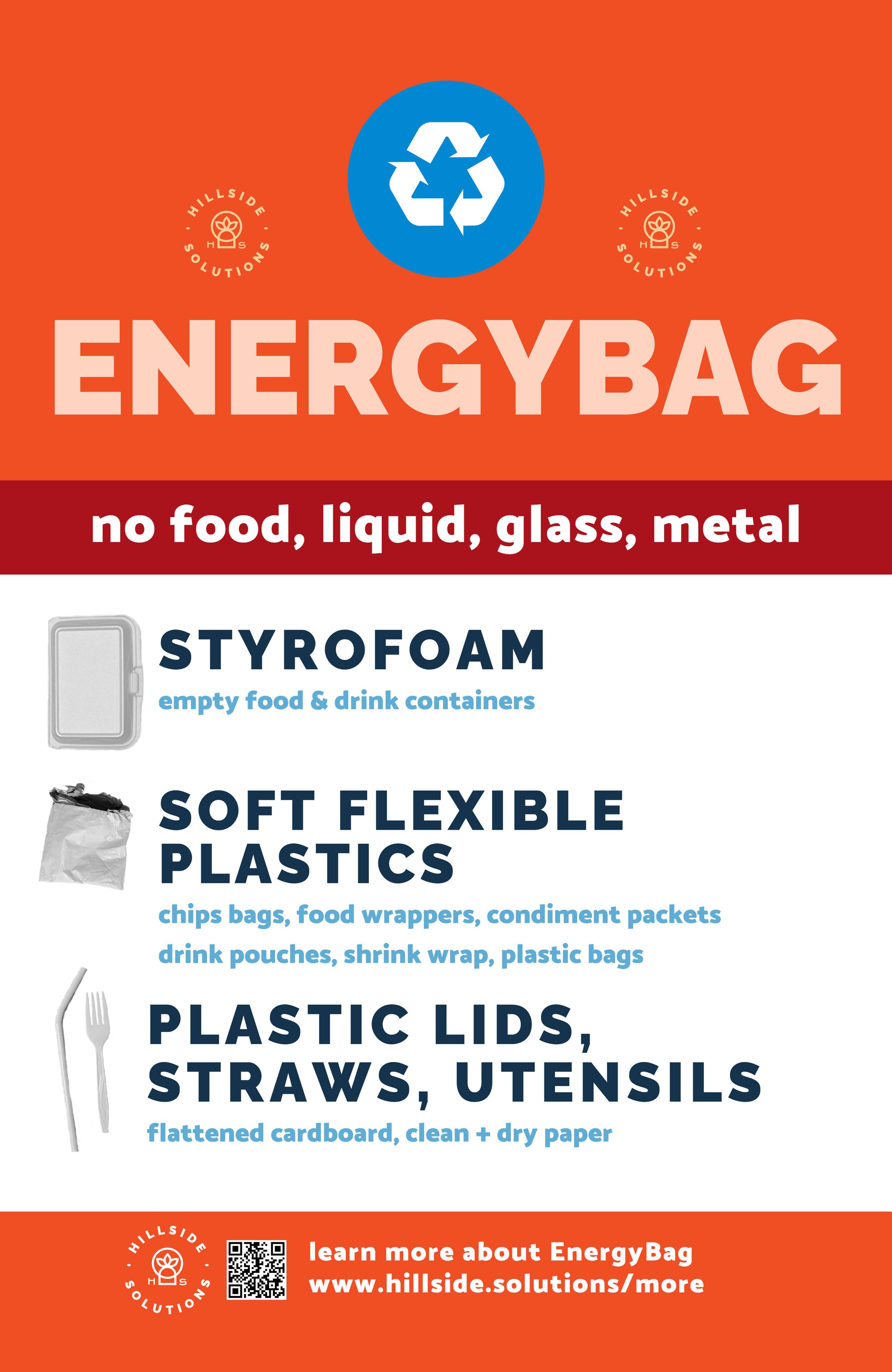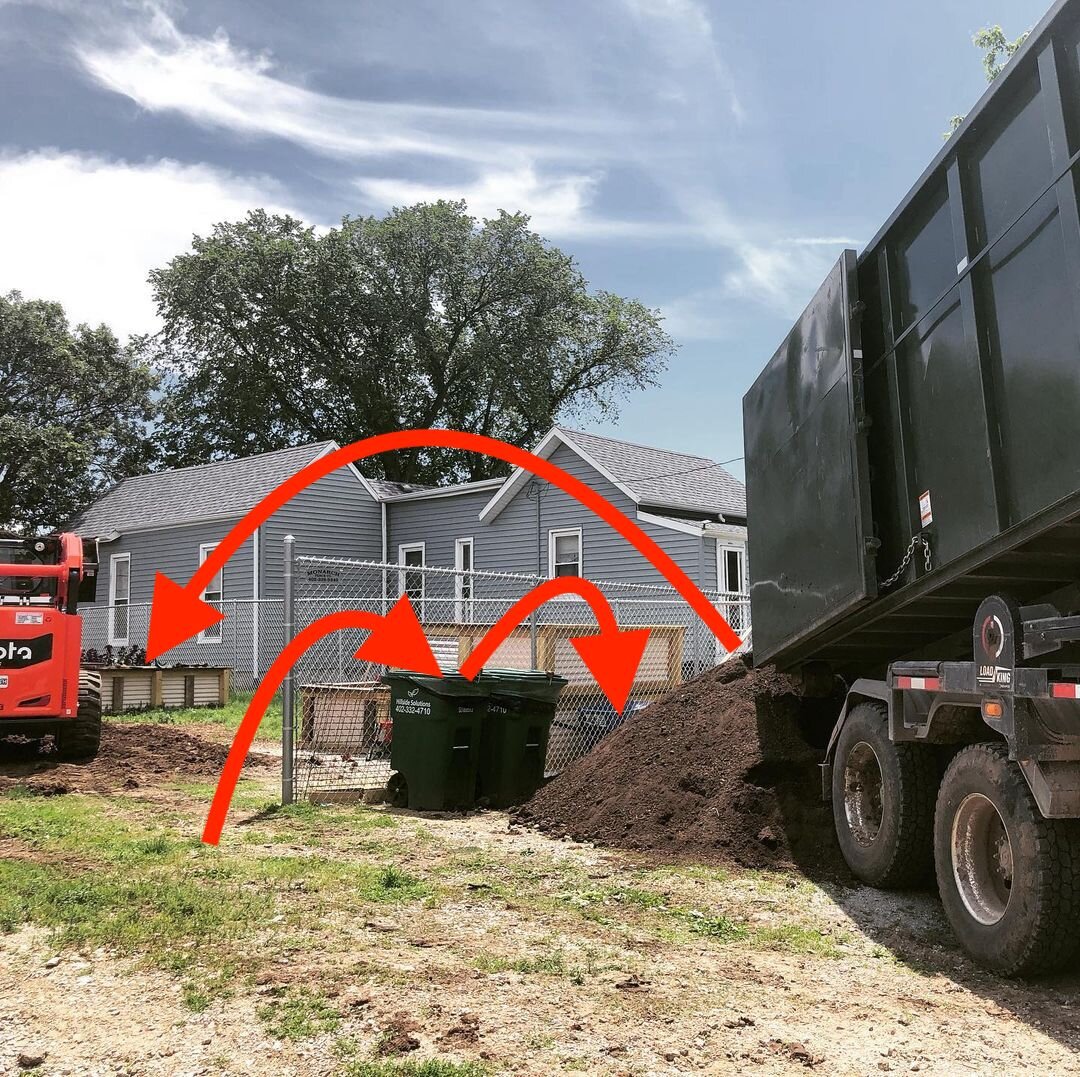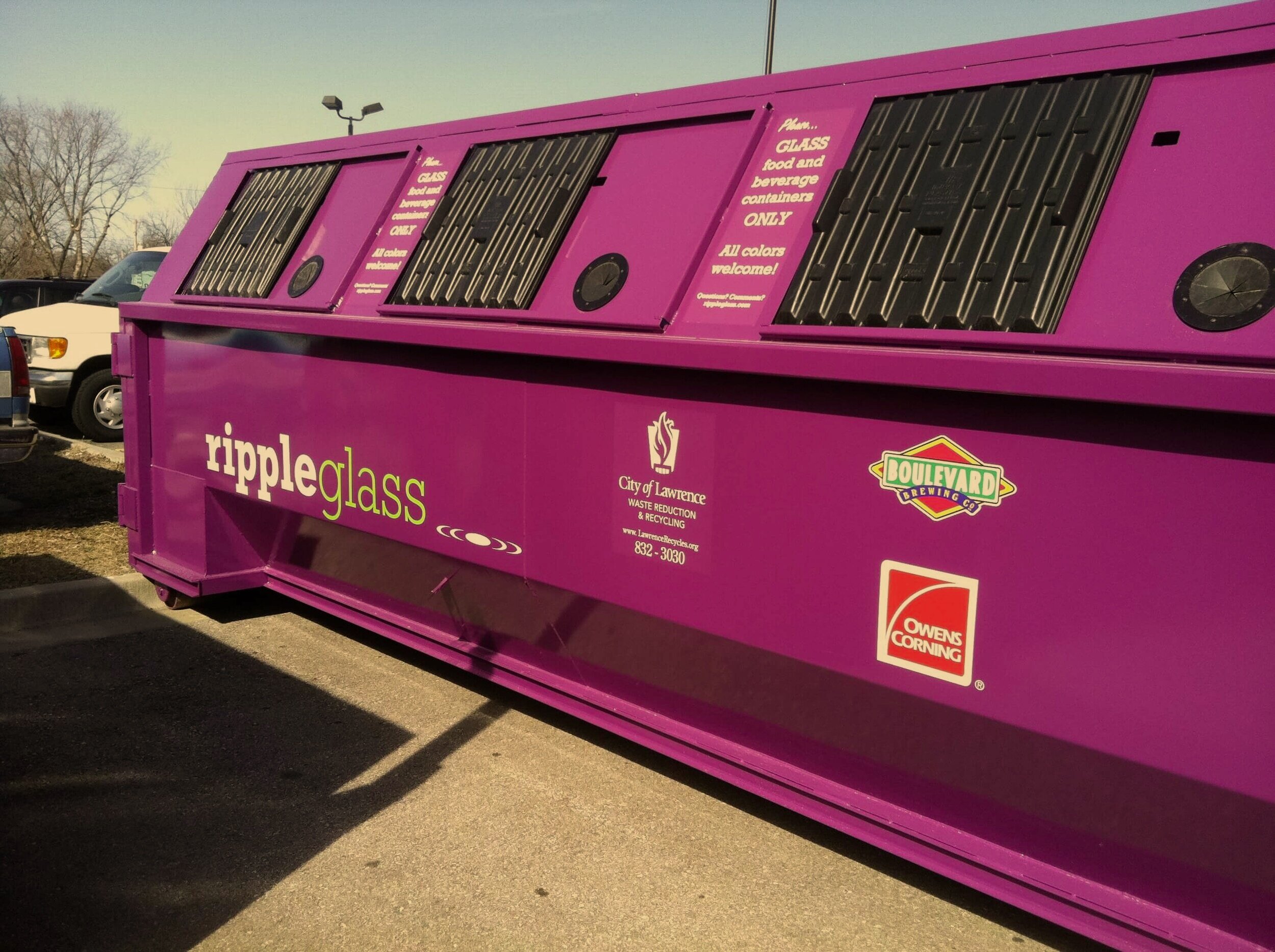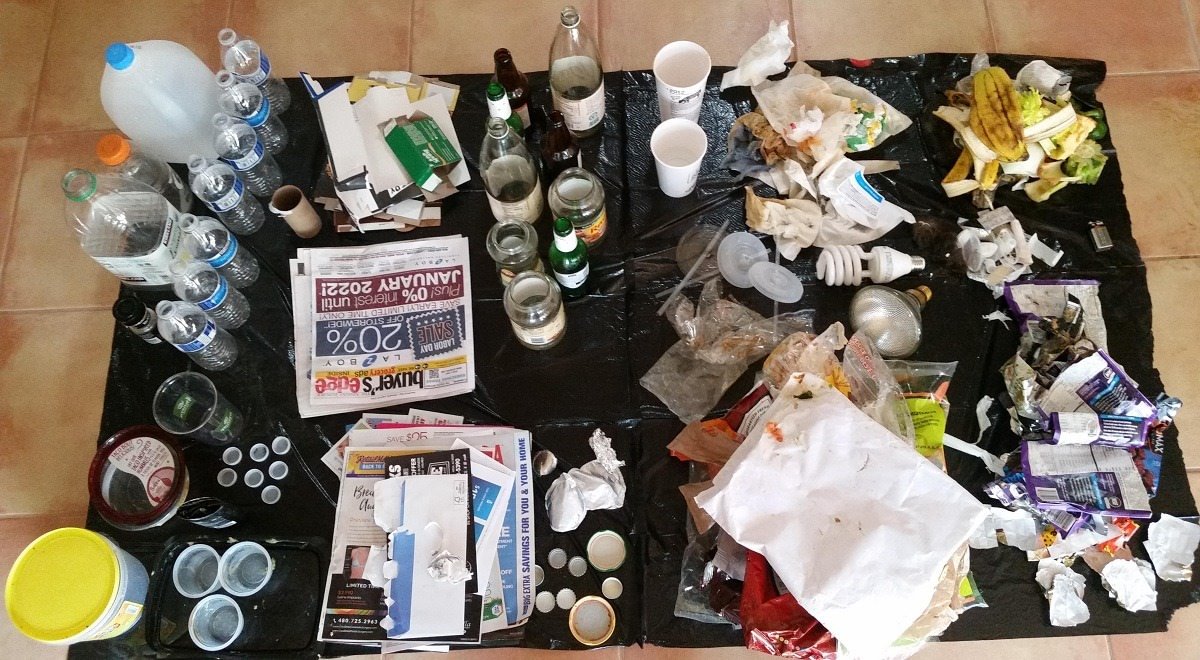
STEP 1
Audit Bins
THE PROBLEM: Usually there isn’t much thought put towards the colors of bins & signage we use. That inconsistency creates confusion, decreases participation, and increases contamination.
THE SOLUTION: Ensure your indoor bins & posters follow the national color coding standard set by leading organizations like Recycle Across America & US Zero Waste Business Council. Every stop sign is red because consistency creates participation. Let’s do the same with our bins.
INSIDER TIP: Orange is the official color used for glass recycling and EnergyBag, But since orange containers are hard to find, we recommend using blue for anything recycling-related.
BONUS - MONEY SAVING TIP: Having the same bins throughout a building can also save a bunch. When you have inconsistently sized bins, you have to stock different sized liners. But often large liners get put in small containers. We know a high school that made its money back on new containers after 1 year.
ACTION: PURCHASE
This section has some affiliate marketing links. We make a small percentage from a sale when you purchase using our links.
Larsen Supply Co
Low-cost local option. They are familiar with our process and stock bins, bags, and compostable service-ware. Mention we referred you.
Bin Manufacturers
For something more developed and customer-forward, these are bin companies recommended by Recycle Across America.
Affiliate Marketing Options
Yes, definitely cringe to recommend purchasing more stuff on Amazon, but here’s a set we recommend if you need a quick Prime fix.
STEP 2
Put Big Signs Above Bins
THE PROBLEM: The tired practice of slapping a recycling logo on something and assuming everyone will know what to do isn’t working.
THE SOLUTION: Successful programs assume no one knows what to do, then create safety nets along the way. Replace the logo with a big instructional sign.
INSIDER TIP: Put the poster where the eye naturally travels, such as above the container or on the counter if it’s a pull-out drawer. Don’t make your own poster (which adds to overall confusion).
BONUS - MONEY SAVING TIP: Watch our hack video on how to print at Kinko’s on the cheap.
ACTION: USE THESE OPTIONS
Local Standard (Free)
Posters we designed. Tailored specifically to our services & comply with local requirements. Download, print at 11x17 inches, then laminate.
National Standard (Paid)
Recycle Across America provides the closest thing to a national standard. Lots of options. All stickers. Hit us up to make sure you get the right ones.
DIY Option (Free)
Recycling Partnerships DIY template lets you customize for your own needs.

STEP 3
Where One Container Is, All Are Gathered
THE PROBLEM: Creating waste is a very mindless activity. When a container is by itself, regardless of what type of material it’s supposed to collect, most people just see a trash can.
THE SOLUTION: If they see 2 or more containers next to each other with different colors and big signs, it makes them stop and pause. This inserts mindfulness into the process. So wherever possible, place all containers for different streams together.
INSIDER TIP/MONEY SAVING TIP: Don’t overwhelm yourself by trying to cover every place you currently have a trash can. Start small & save money by choosing high-impact areas, like a break room.
ACTION: CHOOSE STATION LOCATIONS
Break Room
Instead of adding in recycling/composting containers wherever there’s existing landfill cans, start in a central area like the break room.
Bathrooms
Compost paper towels in the bathroom by designating main collection bin just for paper towels while supplying a small black container for everything else.
Desk
The pros get rid of cans from the desk altogether. Expect initial employee push-back but encourages movement & socialization when they go to break room station.
STEP 4
Pick Your Liners
THE PROBLEM: Outdoor containers that are emptied by the waste hauler have restrictions on what types of liners they accept. If you don’t follow these instructions, recycled/composted material may go to the landfill.
THE SOLUTION: While you can use plastic liners inside your bins to collect recyclables and compostables, avoid putting plastic bags into our recycling & composting carts or dumpsters.
INSIDER TIP: There are two exceptions to the above rule. EnergyBags must be used when you want to recycle soft plastics, and shredded paper for recycling must go in clear plastic bags.
BONUS MONEY SAVING TIP: We sell compost bags and can get them at a cheaper or matching price than you can find online.
ACTION: GET THE RIGHT LINERS
This section has some affiliate marketing links. We make a small percentage from a sale when you purchase using our links.
Compostable Bags
Use these when using our composting service. Do not use them with recycling or landfill. When purchasing, must be BPI certified. Optionally, to save money, you can dump materials directly into the compost carts we empty without using compostable bags. Just don’t put plastic bags in our carts. Use our affiliate link below to purchase BioBags. Or we’ll save you some money & delivery to your directly if need 1 or more cases of a month.
EngeryBag Liners
Use these only with the EnergyBag program, which is for recycling soft & flexible plastics. If these plastics are not in an EnergyBag, they will not be recycled. Eight-gallon bags are available at local hardware & grocery stores. Commercial-sized bags available only from First Star.
Plastic Bags
Highly recommended for anything that’s going to be landfilled. Acceptable for use when collecting recyclables & compostables inside your building. We just don’t want plastic bags to make it into our recycling & composting carts & dumpsters. See the insider tip above for exceptions. Check our affiliate links below for options on where to buy bags made from recycled plastic.

STEP 5
Accurately Empty Inside Bins Into Outside Bins
THE PROBLEM: People that “take out the trash” sometimes put materials into the wrong bins, causing recycling & composting to be landfilled.
THE SOLUTION: Use the guide above.
INSIDER TIP: If you have a cleaning crew, be sure to train and have regular oversight. We also have Spanish posters.
BONUS MONEY SAVING TIP: “Right-size” your service by ensuring you’re getting the correct amount of service per what your building produces. Keep an eye on how full your containers are before pickup, and adjust as needed. Also breaking down boxes can reduce your volume by 20-50%.
ACTION: DOWNLOAD THE CUSTODIAN GUIDE
Download this Guide
We recommend you print, laminate, punch a hole in it, and attach to your custodian’s wheel cart with a metal ring.
Learn why you separate recyclables
Congrats! You have an upgraded and modern recycling program. That’s because we take your material to First Star Recycling, which is the area’s top recycling center. Here’s a quick summary on why you’re using our dual-stream program.
STEP 6
Learn What’s Recyclable
THE PROBLEM: Lots of stuff winds up in the landfill when we recycle the wrong things, especially when food & liquids are involved.
THE SOLUTION: Learn how to recycle right by using the slides above and below.
INSIDER TIP: NPR created our favorite module for plastics. Anywhere they label plastic as trash, you can substitute the EnergyBag here in Omaha. Check it here. Keep Omaha Beautiful has an awesome local guide.
ACTION: CHECK THESE RESOURCES
Commercial Recycling Requirements
Apart from residential or small organizations using 96-gallon carts, a functioning recycling program in the Omaha area that uses dumpsters requires Dual-Stream Recycling. Check our blog post for the most current info.
Residential Recycling
If you need to hire a provider, we suggest using the Curbside Rewards program that we pick up on behalf of First Star Recycling. Otherwise, if the City of Omaha provides you a service, check out wasteline.org for info.

STEP 7
Hefty Renew Bag
THE PROBLEM: Many types of plastics are not easily recyclable. Hard & rigid plastics are easy to capture at recycling facilities, soft packaging and smaller pieces often get landfilled.
THE SOLUTION: That’s where Hefty Renew bag comes in. It was created as a way to capture & reuse this material. When you place your hard-to-recycle plastics in an orange Hefty Renew bag and then place it in your recycling container, we’ll take it to First Star recycling. From there, they’ll grind the material into pellets to be reformed into new local plastic products.
INSIDER TIP: While this program is a nice alternative to landfilling, your ultimate goal should be to pivot away from using hard-to-recycle plastics like this altogether.
ACTION: START RECYCLING SOFT PLASTICS
Get Bags
Suitable for home use or small bins, you can readily find 8-gallon bags at many grocery & hardware stores listed here, or purchase online at Menards. For commercial use, 30 & 50-gallon bags are available directly from First Star.
Download Poster
Download this and other posters from our custom-made collection. We recommend printing at a print shop that can do 11x17 inches and a thick lamination. See our hack video for how to save when printing at Kinko’s.
What Happens to EnergyBags
We find that there’s a lot of misinformation about the end result of this process, so we’re keeping a blog up-to-date on the latest developments.
STEP 8
Composting
THE PROBLEM: While people understand the need to reuse things that humans make (aka recycling), now we need to engrain the need to reuse things that nature makes (aka composting). When compostables go to a landfill, it produces the climate-warming gas called methane, produces a toxic sludge that can potentially get into our waterways, and shorten the lifespan of our landfills.
THE SOLUTION: As demonstrated wonderfully in the Kiss The Ground film on Netflix, we now know that growing things without the use of tilling or chemicals is the best thing we can do to reverse climate change. Our finished compost replaces chemicals, and when you participate in composting, you reduce your carbon footprint and link together the circular food system of soil to plants, plants to consumption, and food waste back to the soil.
INSIDER TIP: There’s a difference between what you can compost at home in your backyard, and what can be composted with us. Learn about at-home composting.
BONUS MONEY SAVING TIP: Donate your food for free instead of pay us to compost it. Saving Grace Food Rescue partners with restaurants and larger food producers. They’ll pick it up and drop it off the same day to local shelters. Plus laws protect ya from being sued over spoiled food.
Beginner’s guide on industrial composting with Hillside Solutions.
ACTION: TAKE THESE IMPLEMENTATION STEPS
This section has some affiliate marketing links. We make a small percentage from a sale when you purchase using our links.
Get Bags
Purchase our preferred BPI-certified compostable bag online now with Earth Hero’s carbon-neutral shipping. Or contact us if you need a case or more on a monthly basis.
Download Poster
Download this and other posters from our custom-made collection. We recommend printing at a print shop that can do 11x17 inches and a thick lamination. See our hack video for how to save when printing at Kinko’s.
What Happens to Finished Compost
We bring your compostables to our Soil Dynamics Composting Farm in Ashland, NE where it breaks down into nutrient-rich soil before going back into our community to help farmers, landscapers, and gardeners (or back to the business itself) to grow plants & foods without the use of chemicals.

STEP 9
Glass Recycling
THE PROBLEM: Glass in a landfill takes up a lot of space. Meaning the lifespan of a landfill is shortened. And there’s a shortage of sand in parts of the world, which is fueling organized crime.
THE SOLUTION: Through our partnership with Glassman, we can recycle it, keep it local, and reuse the material in a variety of projects.
INSIDER TIP: Labels & shards are okay to recycle. Just no bottle caps. And no other types of glass outside of bottles and jars.
ACTION: START RECYCLING GLASS TODAY
DIY (Free)
The City of Omaha provides free drop-off sites for residential use. Technically illegal for a business to drop-off at these sites (but who’s checking, ya know?).
Curbside Pickup (Paid)
Glassman offers a residential curbside pickup service.
Commercial Pickup (Paid)
Businesses and other organizations can hire us to pick it up for you.
STEP 10
What Belongs in a Landfill
THE PROBLEM: Some stuff just belongs in a landfill. Most coffee cups, like Starbucks & Scooters, have a plastic lining on the inside. Same for some “paper” plates (look for the shiny reflection). Combined materials like this are hard to recycle, and composting can’t break down plastic. As for gum, they put plastic in most of that stuff to make it last.
THE SOLUTION: Keep recycling and composting less contaminated by landfilling these items. Consider easily recyclable/composting alternatives or switching to reusables.
INSIDER TIP: Don’t stress if you have to landfill items. If you follow the other actions in this guide, you’re doing great. Keep up the good work!
ACTION: REFER TO THIS COMPLETE GUIDE
Keep Omaha Beautiful Guide
The most extensive guide to what goes where.

STEP 11
Reduce, Reuse, Refuse
THE PROBLEM: Recycling & composting doesn’t absolve us of the waste we produce. That’s because the amount of waste it takes to make our materials outweighs the benefits of merely recycling/composting it. While recycling & composting programs must be standard practice everywhere, the future of solid waste sustainability is in not creating waste in the first place.
THE SOLUTION: If you skip to the end chapter of this climate change saga, the “happily ever after” comes with this step. This is also where cost savings can take place for a business.
INSIDER TIP: Look at what’s inside your bins. Whatever items you see most frequently, take time to research alternatives. Example: create a policy to remove single-use cups and require people to provide their own.
BONUS MONEY SAVING TIP: This is where your organization can save a lot of money. Getting rid of single-use items means you don’t have to spend to restock.
ACTION: DIG INTO THESE RESOURCES
Exist Green
Exist Green in Dundee is Omaha’s first zero-waste retailer. Find eco-alternatives to reduce landfill contributions.
Do a Trash Audit
Get data on what you toss and where it goes. Then you’ll have a big picture view of what to improve.
Zero Waste Tips
Here’s an easy list of things to consider when reducing overall waste.
STEP 12
Train Your Team
THE PROBLEM: Many programs fail due to lack of training.
THE SOLUTION: Along with booking us to do an employee training in-person or remotely, you need to incorporate these practices into the on-going hiring process. Delegate sustainability position or green team to monitor ongoing success. Someone or something needs to own the program, or it will fall apart. Have a “Sustainability Minute” at the start of meetings to instruct/reinforce where materials go. Maintain accountability through regularly scheduled audits.
INSIDER TIP: Use our training video above and tools/employee test below. Also check out Social Marketing Theory: Nebraska Recycling Council’s presentation.
ACTION: USE THESE TOOLS TO SAVE TIME
Employee Quiz
After they review this page, did they retain the info? Just have them take a quiz and show you the results. Use this when training new staff and make your life easy.
Sustainability Pledge
Research shows that once people verbally or in-writing commit to something, they are more likely to do it. So have employees sign a pledge.
Return on Investment
Publicly celebrate these practices as part of your culture. Incorporate your policies into your marketing to boost your return on investment.





